Impressive Minolta Dynax 800si 35 mm autofocus camera
The Minolta Dynax 800si was the top camera in the Minolta si series released in the late 1990s, and as such is a very impressive offering. It added additional very useful features to the Dynax 700si, which I described in an earlier post, such as additional user memory slots, and the ability to store picture metadata without add on memory cards.
Minolta Dynax 800si Images




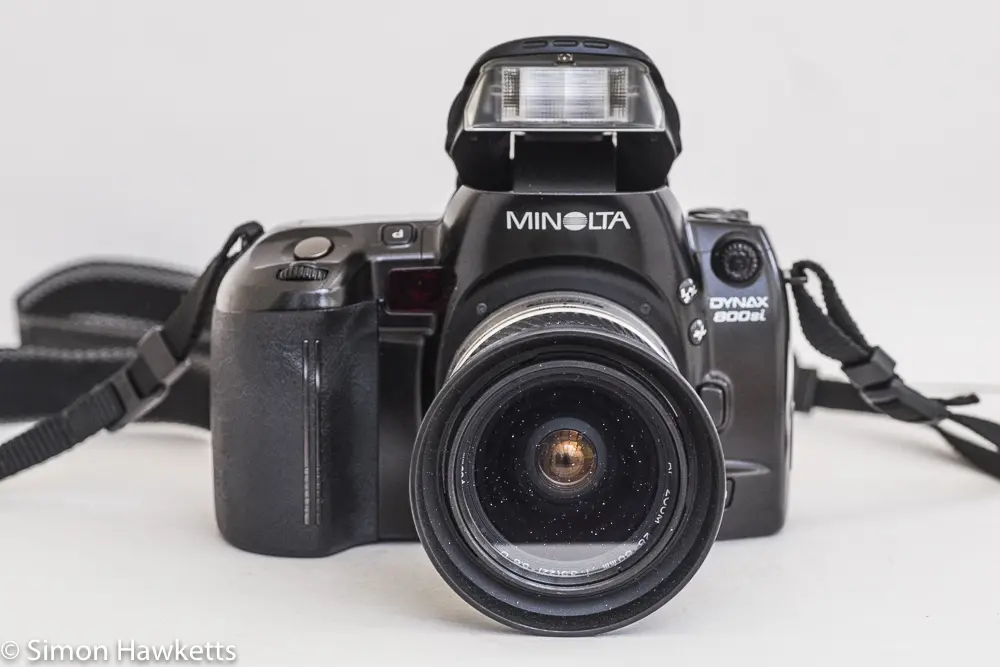



My Minolta Dynax 800si Camera
I decided to look out for a Minolta Dynax 800si after I picked up the model below it, the 700si, a few weeks ago. I was really impressed with that camera and decided I’d like to see what the 800si was like in comparison, so I added a search to eBay to alert me when one turned up. There were several available as ‘buy it now’ purchases, but they were in the £50 to £100 price range which I think is too much for a 1990s camera, but a few weeks ago I got a notification of a unit in an auction starting at £0.99. I kept an eye on it and when it got close to the end of the auction I put a bid on.
Normally I would place a bid in the last few seconds, but because we were on holiday in Lincolnshire when the auction finished and our network connection was fairly slow and unreliable, I had to bid a bit earlier and was pleased that I won the auction and managed to buy the camera for £26.
I took delivery once we returned from holiday, and I was pleased to find the camera is in very good condition – just about like new, in fact. Although there was no lens supplied with the camera, I have several Minolta fit autofocus lenses and fitted a 28 – 80 mm zoom from my Dynax 5 to the body to try the camera out.
Minolta Dynax 800si Description
As I said in the introduction, the Minolta Dynax 800si was the top, flagship model of the si series and has features which placed it in the pro / semi-pro class. It is similar in size and weight to the 700si which makes it a reasonably large camera; not as big as the earlier Dynax 7xi, but certainly not a small or light camera like, for example, the Pentax MZ series.

In construction, it is a solid feeling unit. It seems to be made of plastic, but it’s a hard, solid plastic and doesn’t feel at all flimsy or creaky. Although I wouldn’t want to drop it from a great height, it looks like it could take a few knocks.
One big difference between this model and the others in the series is the missing data card slot. This was because in the 800si model, most of the features which were sold as additional extras in data card form for the less well featured models were available built in on the top model. This means it had the ‘scene modes’ such as Portrait, Close up, Landscape etc as well as full bracketing, multiple exposures, metadata storage etc.
Another stand out feature is the powerful, well featured flash which is fitted to the 800si. There is a real ‘power bulge’ to the top of the flash housing and when the flash is lifted into the active position there is a whirring noise which initially I was concerned about. However, when I looked at the front of the flash, it’s possible to see that the whirring is the flash zooming to match the focal length of the lens fitted to the camera. With a 400ASA film fitted, there is sufficient power to illuminate a subject up to nearly 50 ft away, which is quite a distance.
Control layout, data display and user memory
The camera has a reasonably straight forward arrangement of the controls which are used in everyday picture taking. There are two control dials on the front and the back of the body which allow quick adjustment of the aperture and shutter speed, and allow the user to change other camera parameters when other buttons placed around the camera body are pressed.

The shutter release is just behind the front control dial and follows the usual convention of a half press to activate the metering and autofocus and releasing the shutter with a full press. There are also buttons on the back of the camera which operates the AutoFocus (AF) and can lock the exposure (AEL) when required. At the bottom of the camera base is a switch which can turn off the eye start function if it’s not required.
On the top panel of the camera, next to the shutter release, is a large ‘auto everything’ button, which was also fitted on the 700si and which seems a bit superfluous on a camera of this class, particularly when there are set up memory slots available.
Also on the top panel, but on the other side from the shutter release, are buttons to set the exposure mode and scene modes and the three-way selection switch for setting the user memory slots. The 700si has one memory slot but the 800si goes further and has 3 which I’ll cover in a bit.
On the lens mount are further buttons for exposure compensation and flash power adjustment, along with buttons to select auto or manual focus and depth of field preview.
The controls above are, as I said, the normal controls for everyday usage, but the 800si has an additional range of controls hidden behind a panel on the side of the camera. This is the panel which housed the card slot in the 700si model, but on the 800si it is just a door which opens and has a series of additional function buttons on. These buttons control the drive modes, metering modes, ISO for non DX film (or for override), custom functions, autofocus operation and the data storage functions.
User Memory slots
User memory functions are a common sight on modern DSLR and mirror-less cameras, but they were not as common in the late 1990s. The 800si is equipped with 3 individual storage slots, which are accessed with a rotary switch on the top panel. Compared to the 700si, the setting procedure is a little more involved – you set the parameters that you want to store and then select a memory slot with the rotary switch. Then you open the side panel and press the ‘enter’ button until the word ‘memory’ appears on the top LCD panel.
With the setting stored, they can be recalled at any time by re-selecting the memory slot number with the rotary switch and then pressing the M button in the middle of the selector. The memory slots are capable of storing a whole range of camera settings – the whole list is in the manual, but some notable items are
- Exposure or subject mode
- Aperture & shutter speed
- AF mode
- Drive mode
- Exposure compensation
- Metering mode
Data Display
The top panel LCD on the 800si is larger than the 700si, has the added bonus that it is illuminated when the camera detects it is dark enough to need it, and shows all the information which you would expect.
In the viewfinder, some of the ‘heads up’ data display of the 700si has been removed and the majority of the information is displayed in a panel at the bottom of the viewfinder. I’m not sure if this was a good move – I quite liked the information superimposed on the display, but perhaps it wasn’t well received at the time the camera was made.
However, even without this display, there is still a wealth of information in the viewfinder of the 800si. The focus points can be displayed, and there is a ‘panorama frame’ for when the camera is set to panorama mode. This is basically shading at the top and bottom of the frame, but I guess if you want to shoot in this mode, it’s good to know.
The other point to make about the viewfinder is how big it is, especially if you are used to an APS-C camera with a standard sized viewfinder. It is huge and even with a quite slow zoom lens I find it pretty bright.
Exposure modes & metering
The Minolta Dynax 800si has all the metering and exposure modes offered in the 700si and adds ‘scene modes’ which were an optional purchase via data cards with the 700.
As a recap and for anyone who isn’t familiar with the 700si, that model has a data card slot which allowed the camera’s firmware to be updated with additional functionality. There were cards available for a variety of different functions including specific picture types and were a mechanism introduced in the earlier single digit Minolta range, e.g. the Dynax 7xi, to allow photographers to purchase a cheaper camera and add functionality as required.
Photo metadata storage.
Obviously, in digital photography, it is completely normal to store the picture meta-data with the image. In fact, that data is actually stored in the file which stores the picture information itself. In film photography, however, it is unusual to have this information retained. The only other cameras which I know would store this were APS cameras, where the film was equipped with a magnetic storage area for this purpose.
With the Minolta Dynax 800si, this information can be stored for up to 9 individual films and up to 40 exposure for each of these films. When I recently took the camera on holiday with me, I turned this option on, and I have successfully recorded all the individual data for each of the pictures I took.
This is quite useful, and easy enough to read, but I couldn’t find a way to export the data in a way that would make it easy to import into an application like, for example, Lightroom. I guess at the time the camera was made it just wasn’t something that would have been considered, but it meant that although I have that information, when I had the film developed and scanned the results into Lightroom, I didn’t go through the process of copying that information for each image.
Using the Minolta Dynax 800si
As I said above, when we were recently on holiday in CentreParcs I used the Minolta Dynax 800si to take some pictures with a roll of 400 ISO Fuji Superia film, and although I published the results earlier, I’ve included them here also.







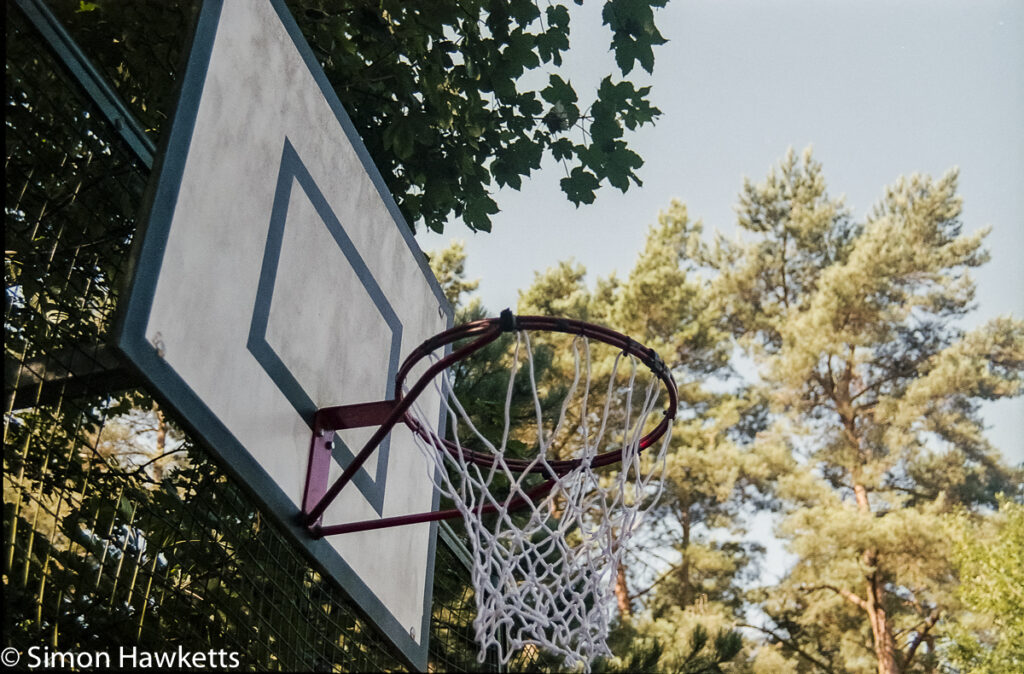



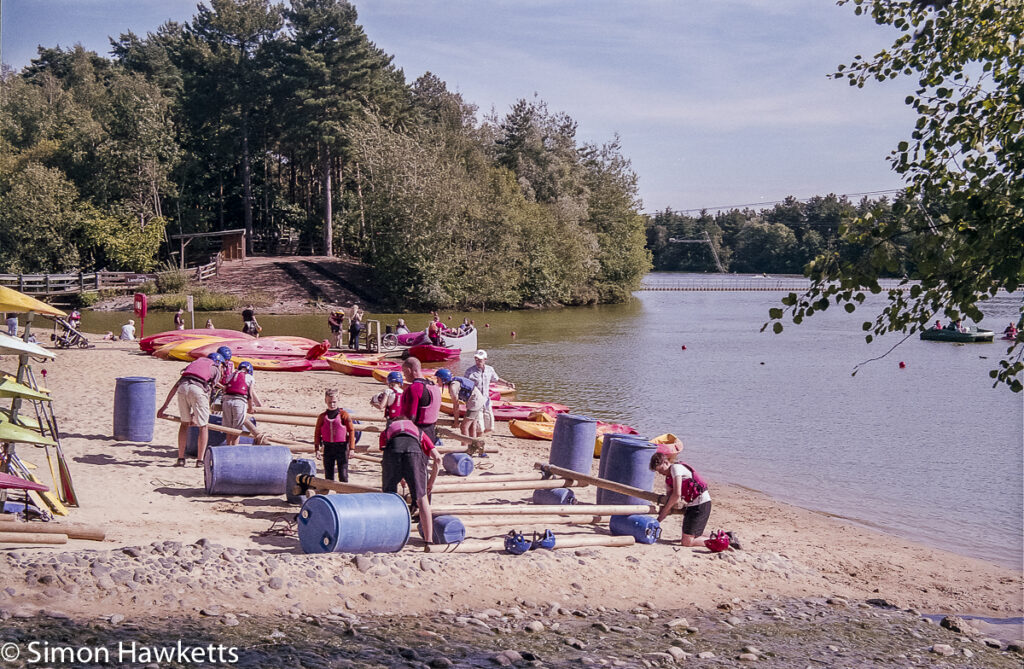



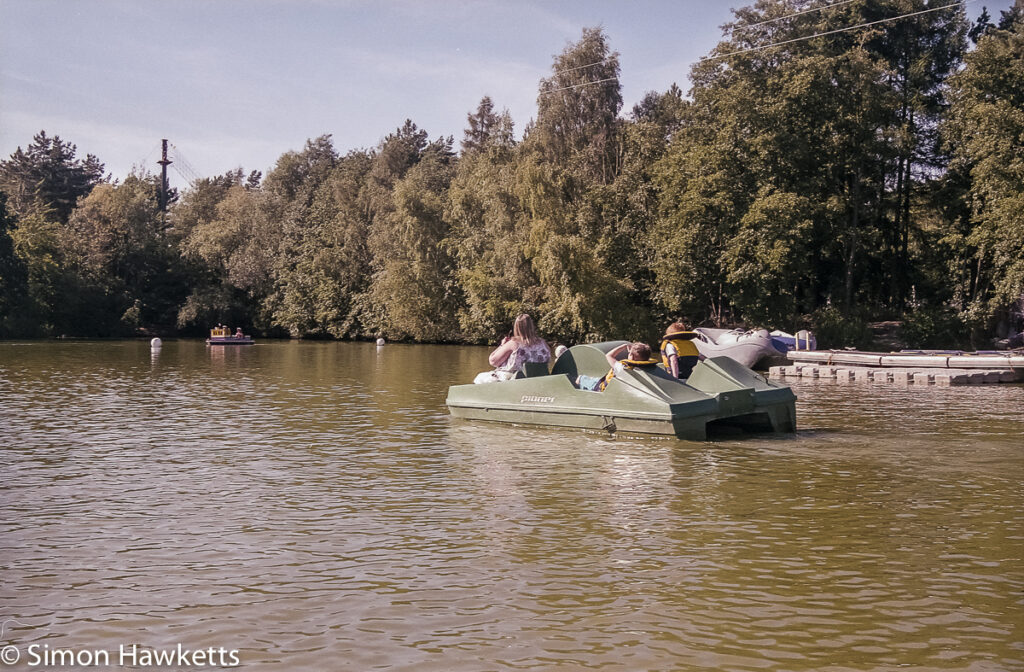
I found the camera a pleasure to use. For a start, the exposure was spot on in all the lighting conditions I tried it under, requiring only the very slightest adjustment in Lightroom after scanning. I also found the focus to be very accurate and pretty quick for a camera of this age. All the pictures I took were with a 28 to 80 mm standard kit lens and it even though it is screw thread driven it was responsive and accurate to focus, even in quite low light.
Although it is a big camera, the plastic construction made it quite light to carry around, and I didn’t at anytime feel I was carrying too much with me.
Overall, I’m very please to add the 800si to my Minolta collection, and I’ve found it to be a great camera.
Minolta Dynax 800si Specification.
- Minolta Dynax 800si 35mm Autofocus slr camera
- Highly accurate and sensitive autofocus system
- Exposure modes: Aperture/Shutter priority, Program mode (with shift), Manual mode + scene modes
- 14 segment metering offering spot, matrix and centre weighted
- ISO speed 25 to 6400 DX coded + manual override 6 to 6400
- Shutter 30sec to 1/8000 + bulb
- Eye start (which can be turned off)
- Interchangeable focus screens
- AF illuminator lamp
- Powerful in-built flash
- Exposure bracketing
- Exposure compensation
- Multiple exposure and multi frame per second drive modes
- Diopter adjustment
- Date back (option)
- Automatic film transport/loading/rewind
- Top panel data display
- User memories
- Picture metadata storage for up to 9 films (40 exposures per film)
- Panorama option
- Many customization options
- Minolta A lens mount
- One 2CR5 battery (required for operation)
- Manual can be downloaded from here
Discover more from Everything Vintage
Subscribe to get the latest posts sent to your email.


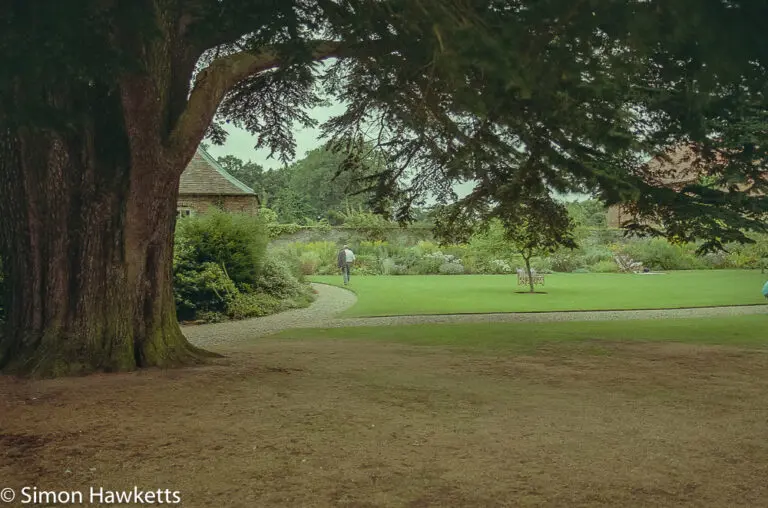

Great camera I bought one from Facebook Marketplace including the Black Version of the 28-80 this has the focus scale on it for £10 including the lens it was mint condition even the mirror box focusing screen had no dust or other debris.
I purchased a VC 700 grip for £15 from eBay
70-210 mm
28 mm
50mm
All Minolta AF lenses was purchased from eBay for about £15-20 each and a later 5600 HSD speedlte for £25 including foot stand and case I also bought a RC 1000 cable switch boxed unused for £5
I also have another Dynax The 500si super which was never used for £6 all from eBay everything included original hoods and caps
One important thing these items I would not part with.
The Dynax 899 si is as good as the later 7 and 9 which are too high priced for used 35 mm SLRs.
There is one thing on The Dynax 800 si is when you put a battery in there is a whirring noise not worry if you hear it it is the camera resetting the camera this is normal and do not do this again only the AF motor if you switch on or off
The Minolta 800si and even The 500si have wireless flash ( I was surprised the ,500si super had it as well.
Minolta Dynax were well ahead in the game in The 1990s